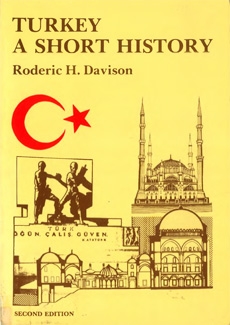|
PREFACE
To the First Edition
The Republic of Turkey was established in 1923. It emerged, after a bitter struggle for national independence, from the ruins of the six-century-old Ottoman Empire. Modern Turkey has inherited much from the people, institutions, and culture of that empire. It has also made such revolutionary changes that it is a new nation. The continuity and the changes are the subject of this book - the rise, grandeur, and decline of the Ottoman Empire, the process of westernization, and the rise and development of the Republic.
The Turkish achievement in the half-century since the death of the Ottoman Empire has been unique. In a pattern quite untypical of developing nations, authoritarian government has yielded to democratic government and competitive multi-party politics. This poses special problems for the Republic. If the Turks can persevere in their efforts to build a strong economy and a stable and enlightened society without returning to authoritarian rule, they will have demonstrated again, as they did in other ways in building the Ottoman Empire, an extraordinary talent. They have centuries of experience to draw on and a new ideal to inspire them, but the road ahead is still rough. They know it and frequently quote the exhortation of Ataturk, founder of the Republic: “Turk! Be proud! Work! Be confident!”
R.H.D.
Washington, D.C., February 1968
Preface to the Second Edition
Since February 1968, when the foregoing Preface was written for the first edition of this history, there have been many new developments in Turkey. The most important of these form the subject of the newly added Chapter 10, which has been almost completely written by Professor C. H. Dodd, formerly of the University of Hull and now Chairman of the Modern Turkish Studies Programme in the School of Oriental and African Studies of the University of London. In first draft this chapter was kindly read by Dr. W. Hale.
I regret the lack of opportunity to make changes in the text of the first nine chapters. Readers will realize, therefore, that references in these chapters to “modern Turkey” and to “today”, as well as statements in the present tense, refer to the late 1960s. Many of these statements are still valid in the late 1980s. Others require modification or supplement such as will be found in Chapter 10.
The original bibliography has been amplified in two ways. A selection of important works on Turkish history that have appeared in the last twenty years has been added. Further, the most useful titles on recent and contemporary Turkey are also included.
In Chapter 10 all Turkish words, including names, are spelled as in Turkey today.
R.H.D. Washington, D.C., July 1988
1
Contemporary Turkey
At 9:05 a.m. each November 10 activity in Turkey comes to a halt. Traffic stops. Automobile occupants get out and stand quietly at attention. For five minutes the country remembers in silence the moment of death of Mustafa Kemal Ataturk, creator and first president of the Turkish Republic.
Ataturk died in 1938. Modern Turkey is peopled by a generation and more who know him only through education and tradition. Yet Turkey still lives in the long shadow he cast. His picture is everywhere. Although Turkey has come a long way since his death, the guiding policies which he laid down have fundamentally been followed: the creation and preservation of a territorially limited national state for the Turks; the inculcation of a Turkish national consciousness; the breaking of the hold of Islam over state, law, and education; the westernization not only of material life but of institutions, minds, and customs; the rapid development of the economy; an avoidance of class divisions and growth of a sense of solidarity; a devotion to the republican form of government; and finally, the pursuit of peaceful foreign relations. Ataturk, of course, was not alone in encouraging these policies nor in working them out. Nor could he have achieved what he did without the basis provided by a century of reform effort before him. He was, nevertheless, the chief driving force in the creation of …
| 